CHIHARU SHIOTA I to EYE
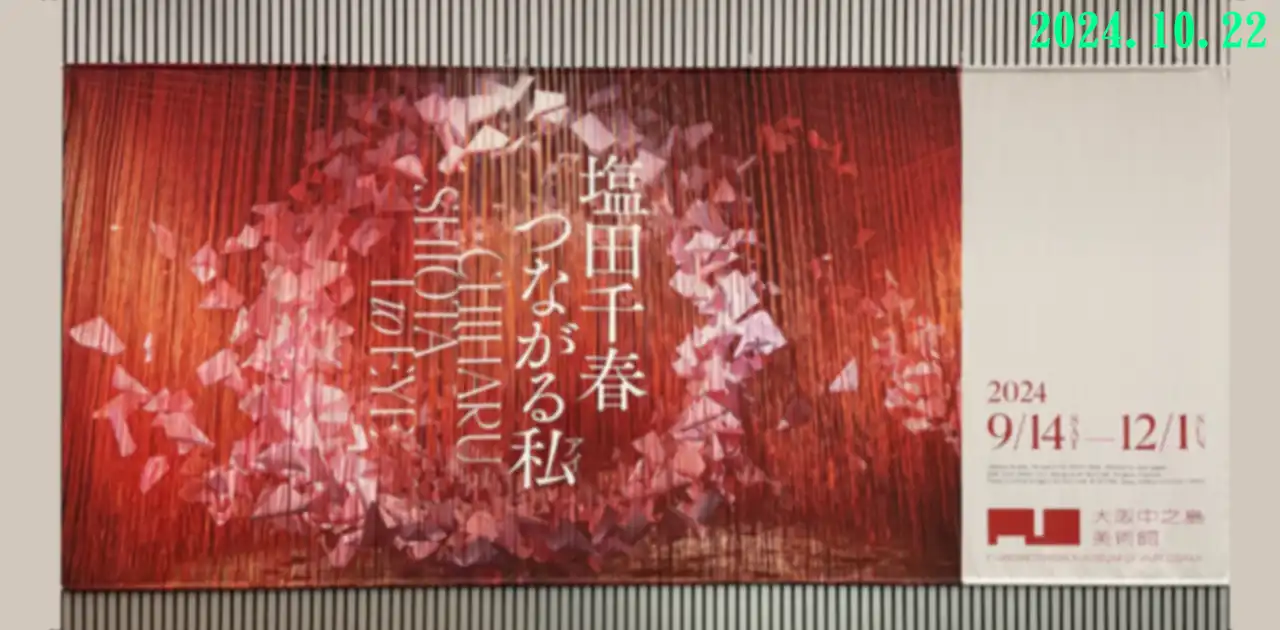
Looking at life and connections
Review of “Shiota Chiharu: I to EYE” at the Nakanoshima Museum of Art, Osaka
Table of contents
About Exhibition
- Period: Saturday, September 14, 2024 – Sunday, December 1, 2024
- Closed: Mondays, September 17 (Tue), 24 (Tue), October 15 (Tue), November 5 (Tue) *Open September 16 (Mon, holiday), 23 (Mon, holiday), October 14 (Mon, holiday), November 4 (Mon, holiday)
- Opening hours: 10:00 – 17:00 (entry until 16:30)
- Venue: 5th floor exhibition room, Nakanoshima Museum of Art, Osaka
- Organized by: Osaka Nakanoshima Museum of Art, MBS Television, The Asahi Shimbun Company
- Sponsors: Daikin Industries, DNP Dai Nippon Printing, Takenaka Corporation, Hamanaka, Rihga Royal Hotel (Osaka)
- Admission Fee
- General: 2,000 yen (1,800 yen for advance tickets, groups, and weekdays)
- High school and college students: 1,500 yen (1,300 yen for advance tickets and groups)
- Junior high school students and younger: Free
- Free admission for museum members/member discounts available
View Report
A report on viewing “Shiota Chiharu: I to EYE,” held at the Nakanoshima Museum of Art, Osaka on October 22, 2024.
<Table of contents at Review>
- The way to the Nakanoshima Museum of Art, Osaka
- “Shiota Chiharu: I to EYE”
- Entrance
- White room
- Video room
- Red room
- Outdoors
<The way to the Nakanoshima Museum of Art, Osaka>
I took a bus from Osaka Station (Umeda Station) to the museum. There are several buses heading in the direction of Nakanoshima, but I took Osaka City Bus No. 53 (bound for Funatsubashi) to the Taninobashi bus stop, which is the closest to the Nakanoshima Museum of Art.
The Taninobashi bus stop where I got off was near Nakanoshima Daibiru, and since I hadn’t had lunch yet, I had lunch at the Kyu-Yamtei Nakanoshima Western-style Building on the second floor of the building. I had pork keema and chicken curry with brown rice for 1,300 yen.
Nakanoshima Daibiru was completed in 2009, and the entrance hall has an open ceiling, with restaurants on the first and second floors. The entrance hall has beautiful ceiling lighting.
The curry here was quite filling, and I overheard the office lady eating next to me say, “I should have ordered less rice.” It was lunchtime on a weekday, so it seemed like the restaurant was being used by nearby workers for lunch. It’s nice that you won’t have a problem finding a place to eat during weekday lunch hours in an office district.

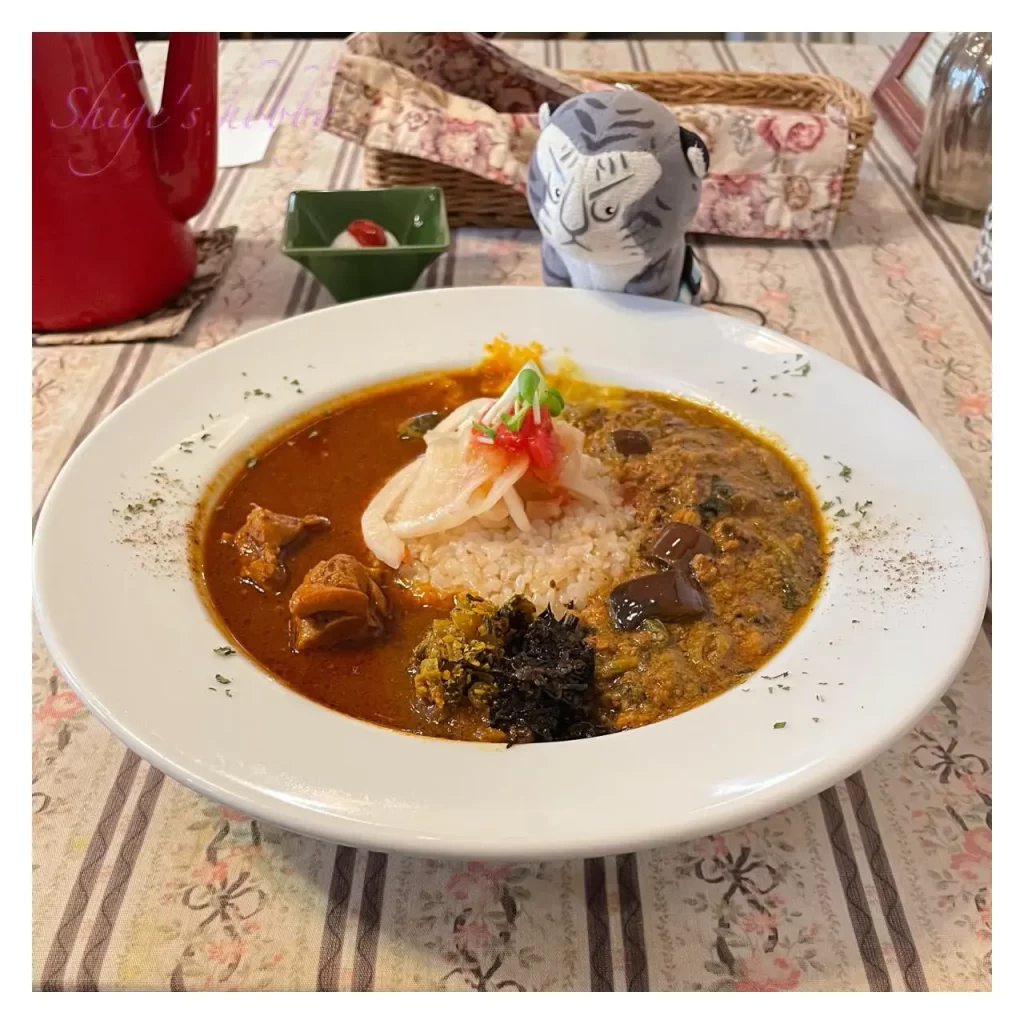
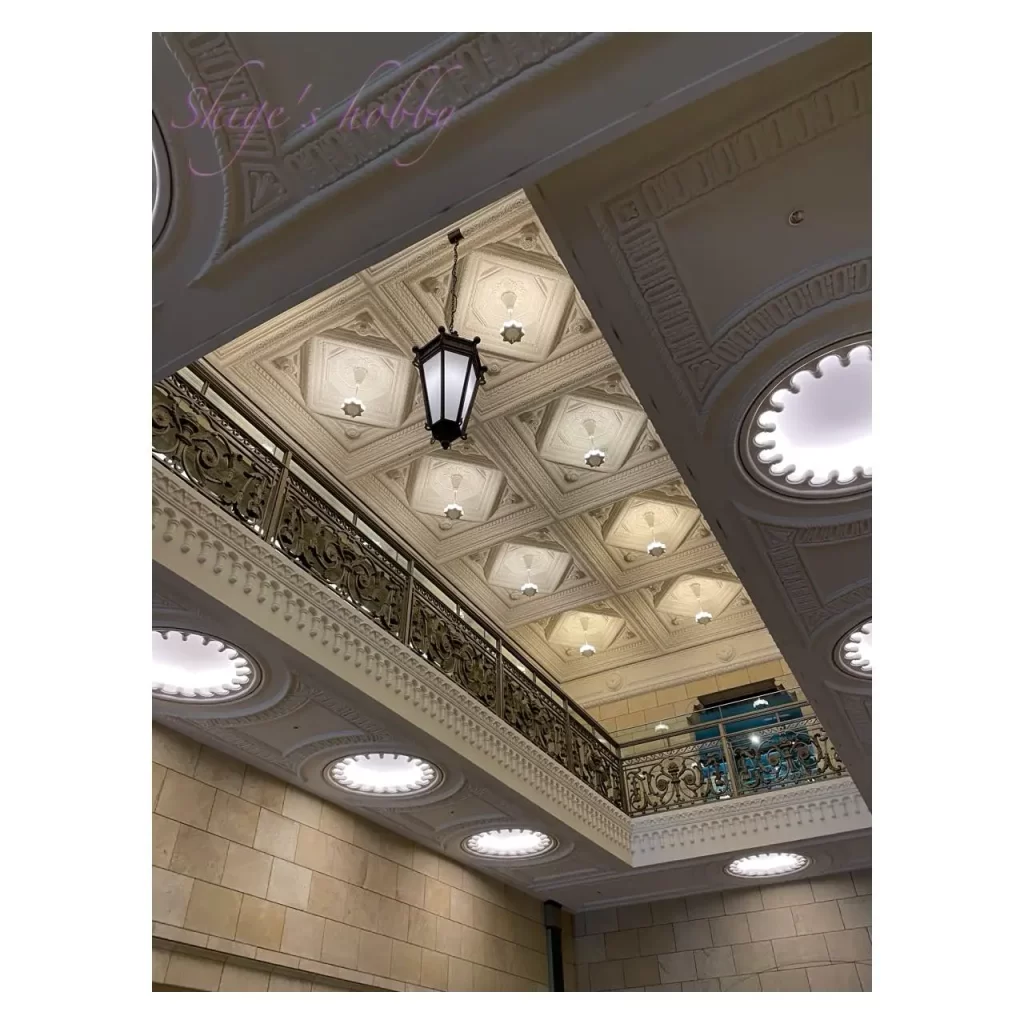
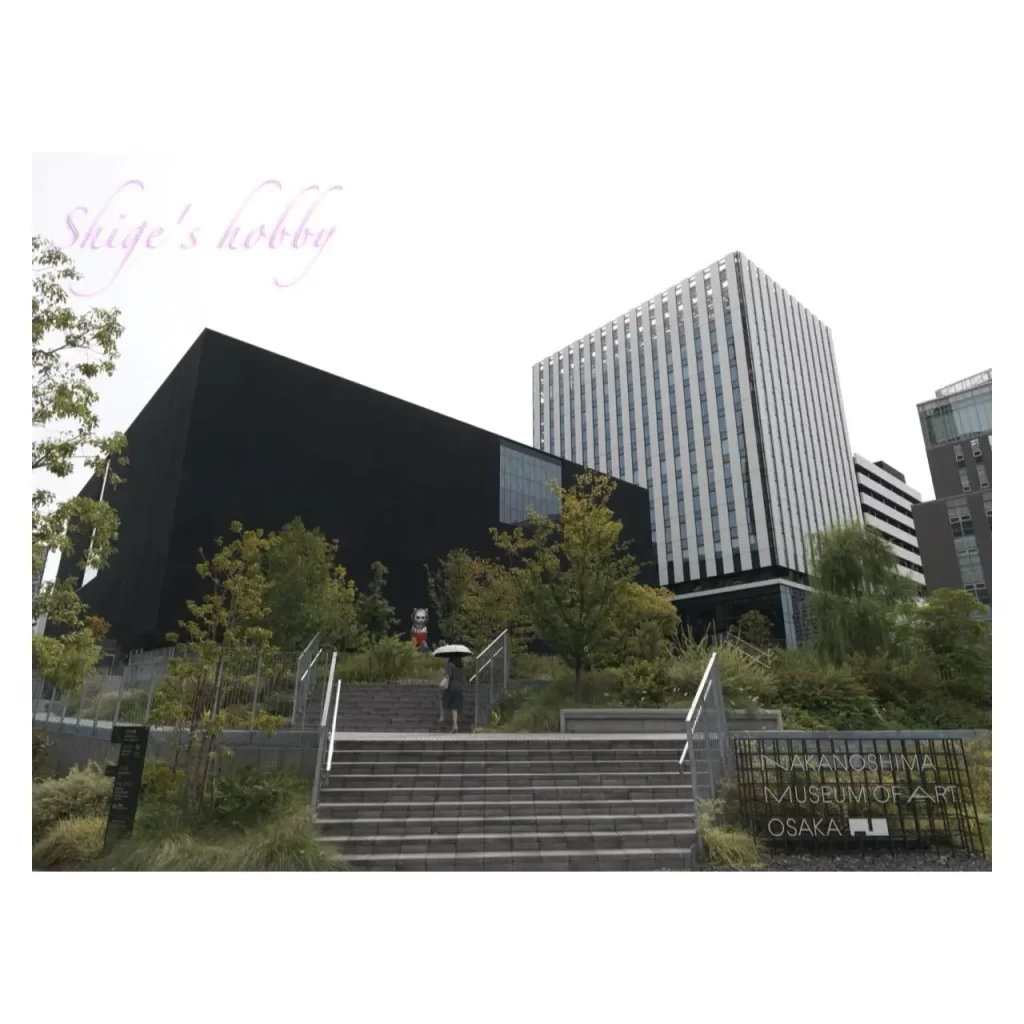
<Shiota Chiharu: I to EYE>
This exhibition occupies the entire fifth floor of the Nakanoshima Museum of Art in Osaka and is divided into four sections: the free entrance, the White Thread Room, the Video Room, and the Red Thread Room. It is a more compact exhibition than “Shiota Chiharu: The Soul Trembles,” held at the Mori Art Museum in Roppongi in 2019.
<Entrance>
The entrance is a work called “Internal Line,” a vivid red corridor made of thread, cloth, and robes that continues to the entrance of the exhibition. The light is blocked by people passing at the end of the corridor, changing the expression of the work, and the scenery changes as you move. The work makes you feel that there is no eternity or the same moment. I was quite satisfied with this exhibition before I even reached the entrance. This can be viewed even after leaving the exhibition, so I lingered for a while on my way out.
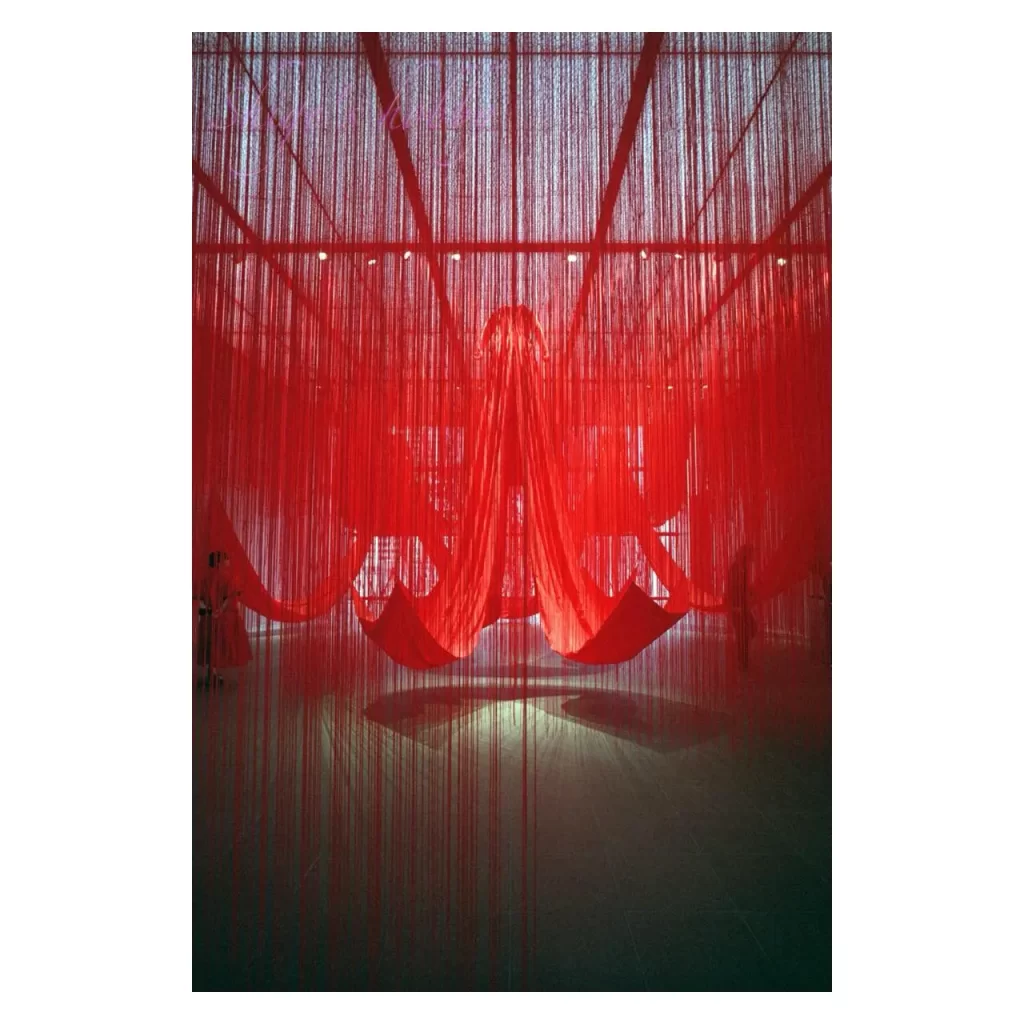
<White room>
In contrast to the red space, the white room is covered with white threads and has a large pond on the ground. It must be quite difficult to bring that much water onto a floor that is five stories above ground.
Introductions to the artists and greetings are posted between the white threads on the walls, giving the impression that the exhibition has begun.
As you proceed through the room, you notice drops of water trickling down from pipes sewn through the gaps in the thread, hitting the water surface like an IV drip, and it feels like a connection to the interview in the next room, in which Shiota talks about her feelings when she was hospitalized for illness.
Turning around before entering the next room, you can see the red of the entrance at the back of the white room, like the morning sun.
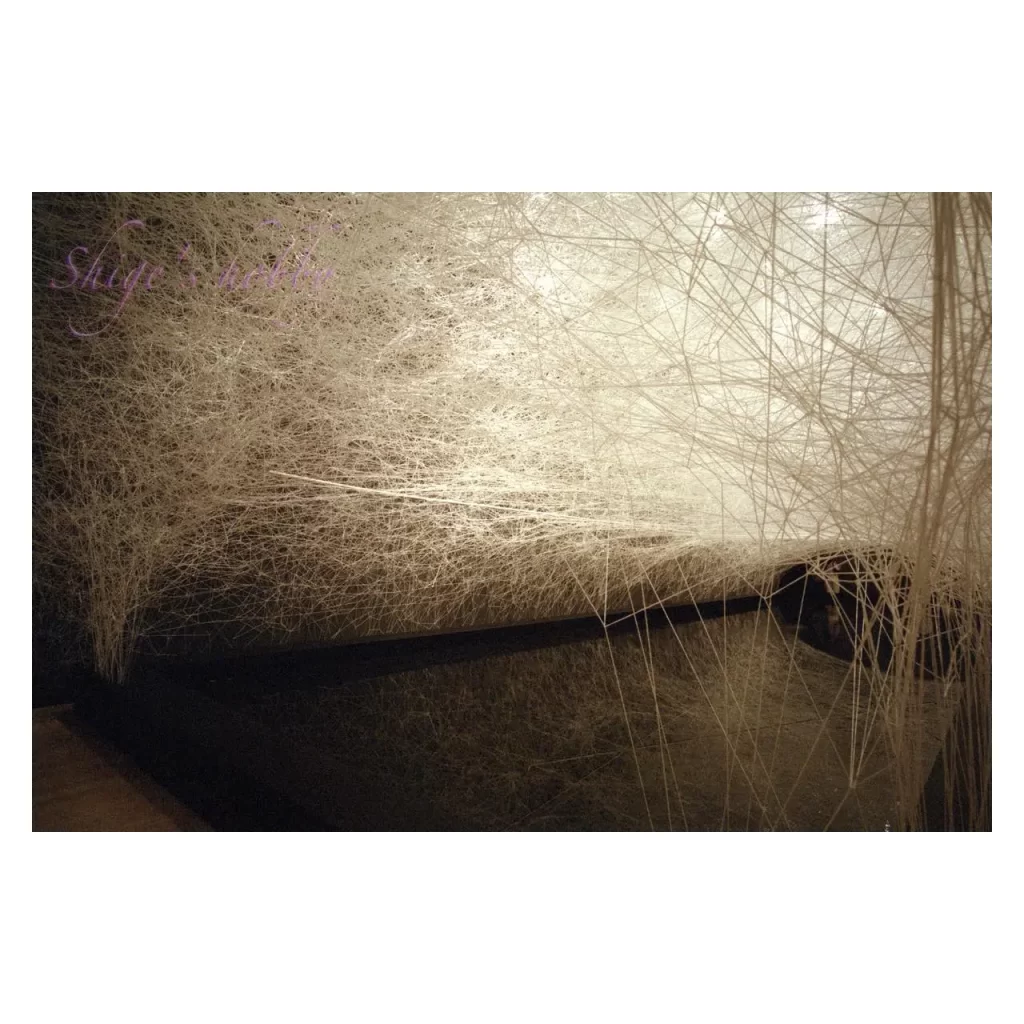
<Video room>
In “Shiota Chiharu Chronology,” shown on the largest screen, I was impressed by what Shiota said about the gap between the position of providing medical care when she was hospitalized due to illness and the position of receiving it.
In the hospital, the self is treated like an object, and hospitalization means isolation from the world and deprivation of freedom, living together with people in the same situation, a world far removed from everyday life awaits, and whether one likes it or not, one is faced with a time to reexamine oneself. I believe that experiencing a certain degree of illness is bound to change the way one lives and thinks.
In this room, there is another video work from the past and three two-dimensional works, and behind them, “Second Skin,” one of the few black works in this exhibition, is quietly displayed. As you can see, “Second Skin” exists only on the outside, and I never expected to be confronted with its inside in the future.
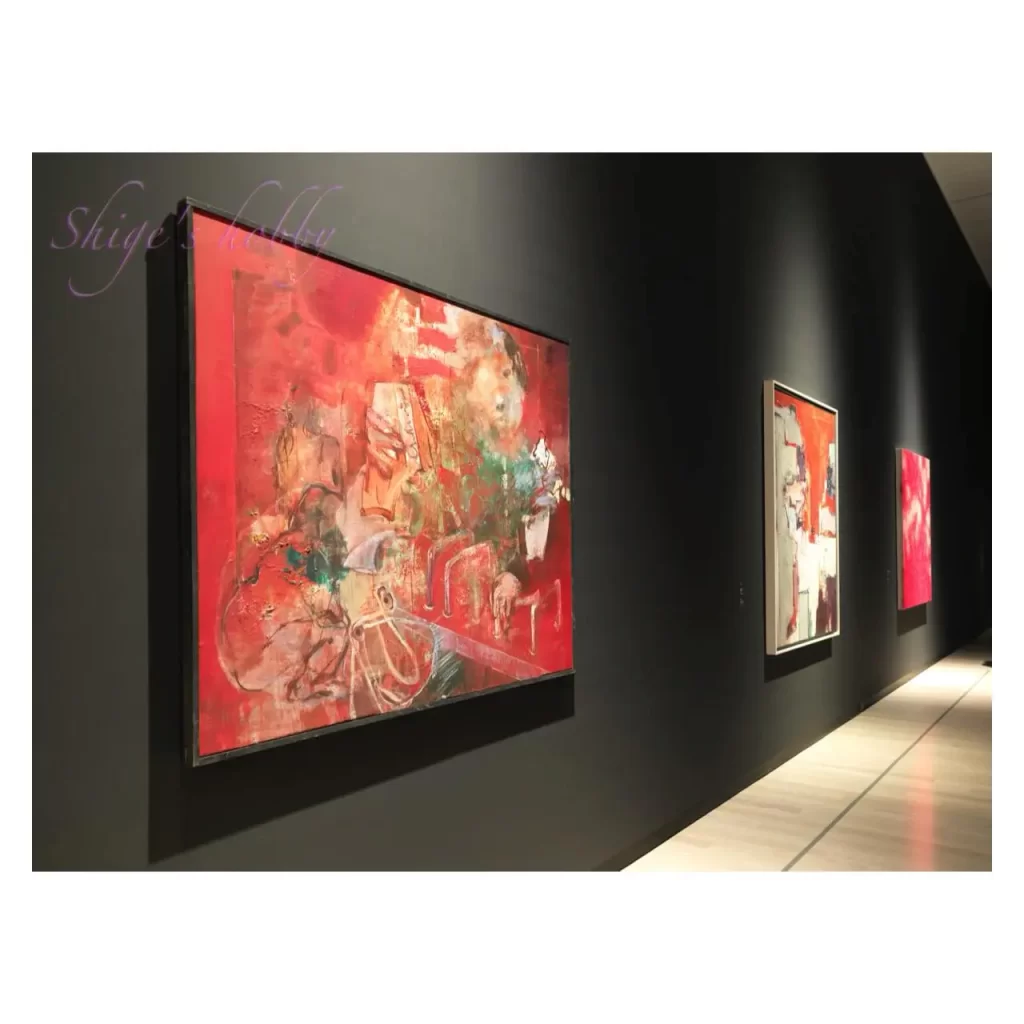
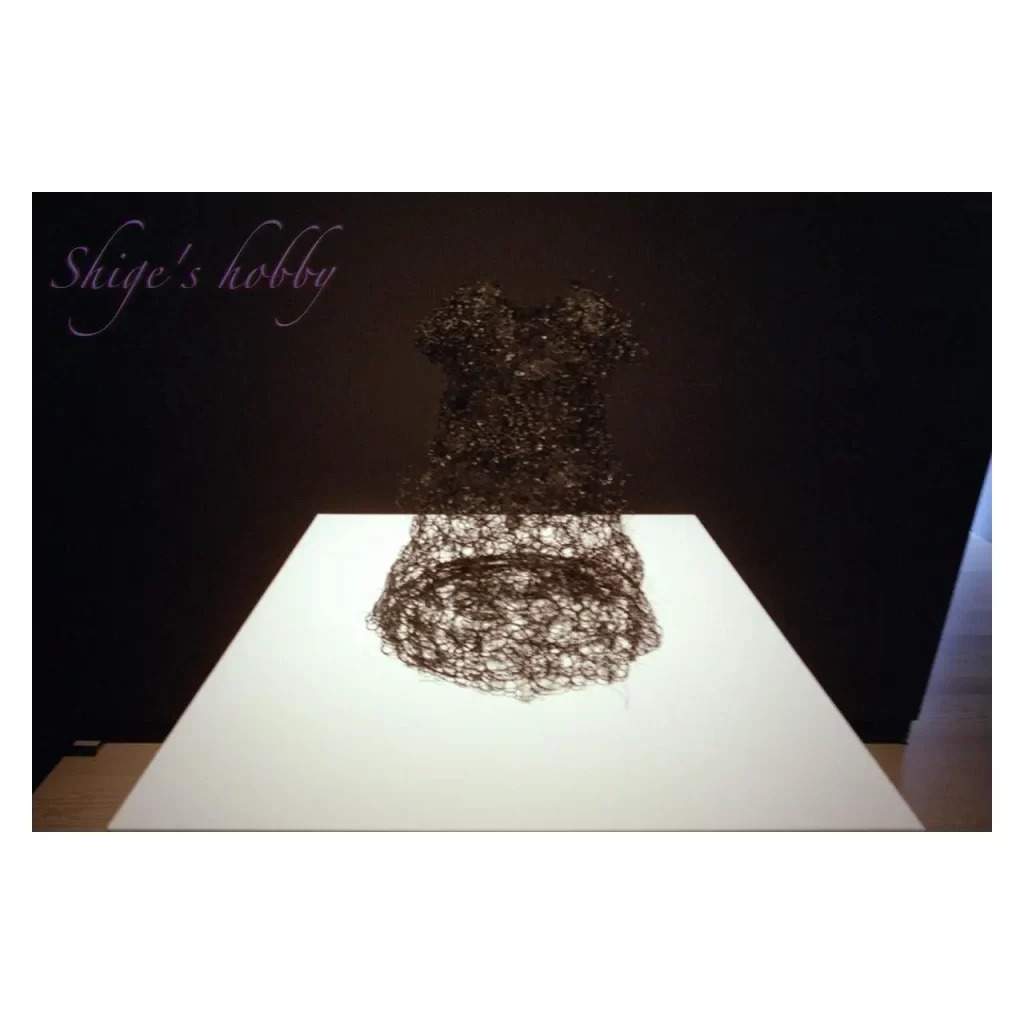
<Red room>
The Red Room is the largest room in the venue, and four installations, a video installation on the walls, drawings and other two-dimensional works are on display. Below are my impressions of the four installations.
“From House to House”
Shiota explained that she wanted to create a house for the exhibition in her hometown of Osaka.
There are several houses in the exhibition hall, and although they vary in size and shape, all of them have holes so that you can see from the outside to the inside and beyond. Each house offers a different view from modern homes that are tightly sealed and prefer isolation, and I was reminded that I am living in a state of confinement. The Olson House by Andrew Wyeth that I saw in the morning is a typical example of an open house, and I was happy to see a common theme in the two exhibitions.
“Circle of Connections”
Moving works like moviels, many of which move slowly, but this piece moves ceaselessly at high speed, as if to symbolize our modern, time-chasing times.
The spinning white dress and red string object, the red and white intersecting visually although they do not physically collide, and the shadows interfering and intertwining, reconnect the connections that were forcibly severed by the COVID-19 pandemic.
I felt that the desire to “create an everlasting circle,” as stated in the work’s description, was expressed as connections in various ways.
“Multiple Realities”
A white piece of paper hanging from a red thread, with many people’s thoughts written on it. If you read what you can, you will find many different things written on it. The bundle of thoughts is illuminated by light and becomes a diverse landscape. It is imagined that each person looking at it sees a completely different landscape. I think diversity is about recognizing that people see things differently.
“The Self in Others”
This installation of human body models and threads is located on the same line as the location where “Second Skin” was exhibited, and seems to contrast the inside and outside of a person.
In the explanation Shiota himself wrote for the work, he asks, “Do you think these are the same as your organs?”
I think so. It is true that humans have these organs, but it is difficult to identify the organs in the models with those of the self. This is because, whether you see your own organs on video or see the real thing removed, when you see them from outside yourself, when the information enters your brain through your eyes, it feels like it is being processed by the brain as a symbolic other. However, each person has their own way of feeling about an object, and it is possible to receive it as yourself. This is also a form of diversity.
The explanation on site also includes Shiota’s interpretation, and I wonder if it will be included in the catalogue?
Finally, I would like to introduce “nokon kjem til å komme”, which was exhibited next to “The Self in Others”.
This work depicts a scene from the play “nokon kjem til å komme” by John Fosse.
The explanatory note said that Shiota and Kawai Sumie, who translated “Nokon kjem til å komme”, were close friends and often spoke about the play. There was also a description of Kawai’s illness.
From these points, the work and the text seemed to exude a sense of regret at the loss of such an important bond.
I wanted to know if I could find the same scene in the play “Someone is Coming,” so I decided to read the translation “Someone is Coming” (translated by Kawai Sumie, Hakusuisha, 2023).

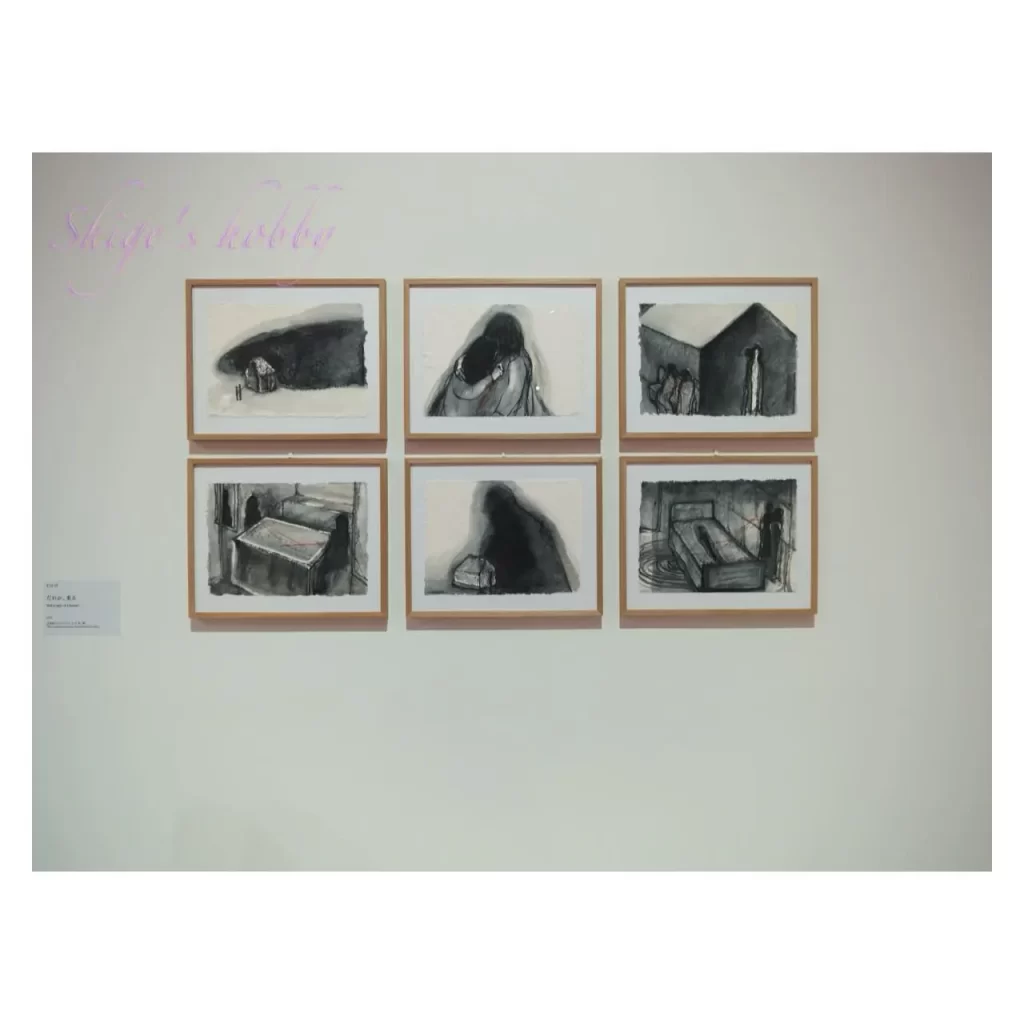
After finishing my viewing, I wandered around the shop and found a variety of goods, including Ibonoito and Chateau Mouton Rothschild wine, both of which use Shiota Chiharu’s artwork on their packaging. The catalogue was available for pre-order in early November, and was later released around November 5th.
While looking at the products in the shop, I wondered if the prevalence of red in this exhibition was related to the current Osaka Expo’s “Designing Future Society for Our Lives” theme, or if it was related to Myakumyaku-sama’s red eyeball, but I guess that was just an unfounded worry.
<Outdoors>
As I left the exhibition exit and went down the stairs, I found Giant Tora-yan. As I went down the escalator, I saw a signboard about the project, and on the 4th floor, “TRIO Paris-Tokyo-Osaka Modern Art Collection” was being held on almost the same dates as the Shiota Chiharu exhibition.
At the ticket booth, there were no combined tickets for both exhibitions, and I was told that people who wanted to see both should purchase tickets separately. Since I had already seen it in Tokyo, I passed on the TRIO exhibition. Perhaps because the two exhibitions are run by different organizations, they may not be able to do something like a joint project, but I would have liked to see the TRIO exhibition again if there had been a discount, such as a 500 yen discount for both exhibitions.
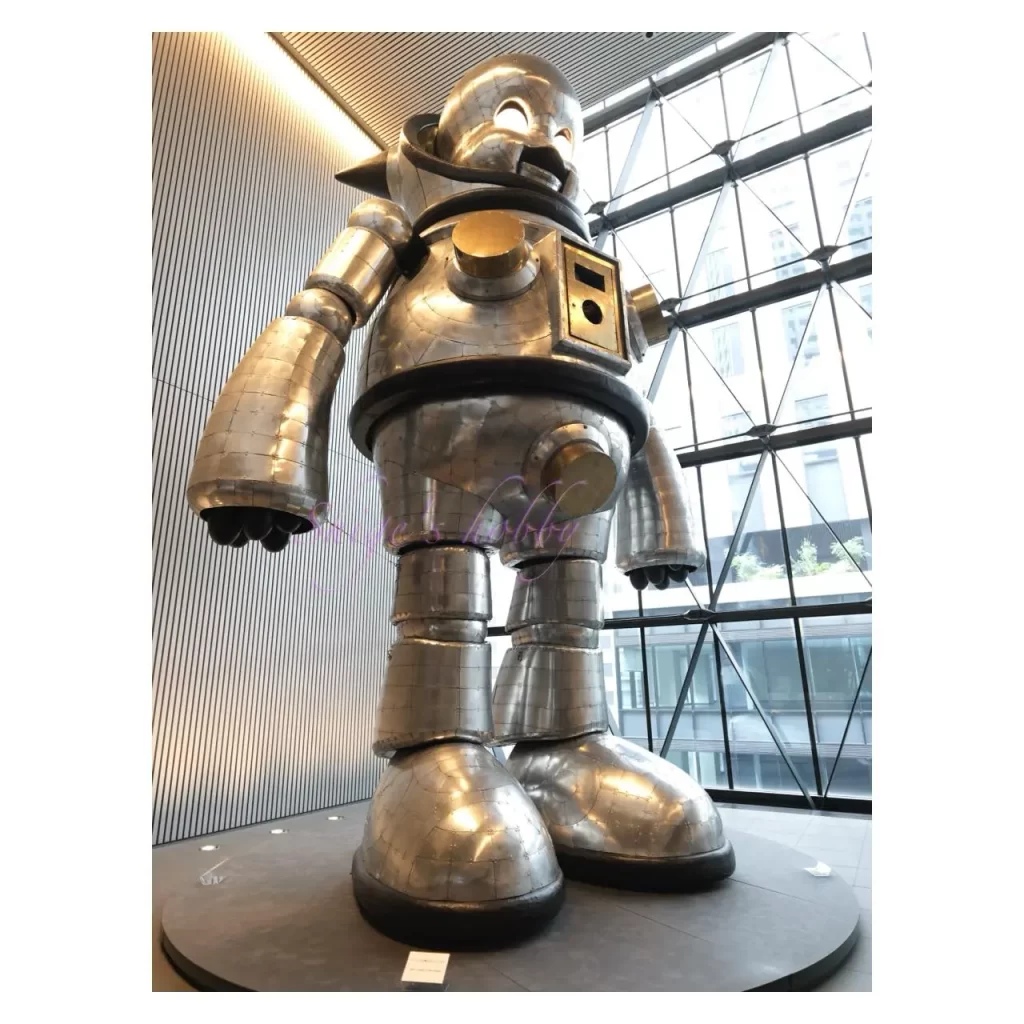
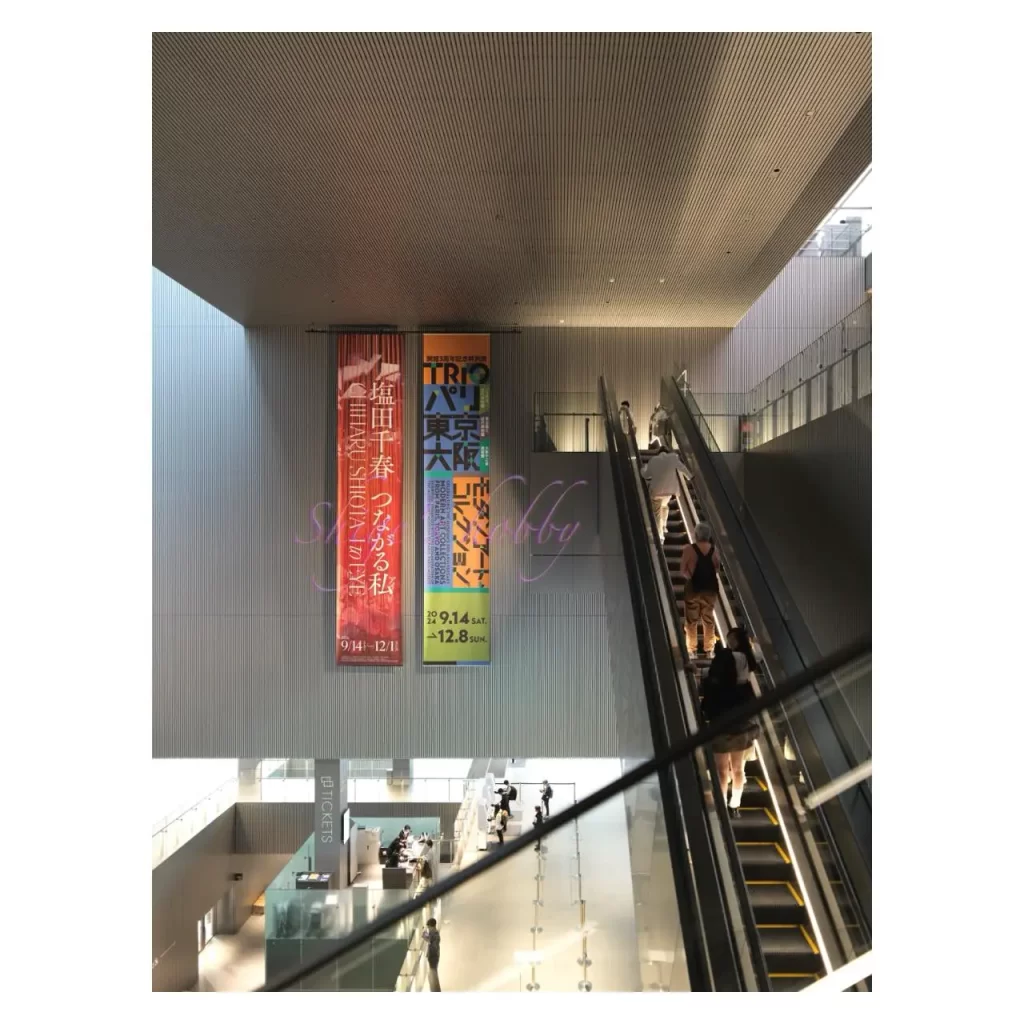
The Nakanoshima Museum of Art in Osaka introduced it on X (SNS) and said that the view of the setting sun shining in in the evening is wonderful, so it would be a good idea to visit if you are staying until the evening. However, I only found out about this fact after my visit.
When I went outside, I saw the SHIPS CAT in the garden of the museum, and confirmed that the deck connects the Nakanoshima Museum of Art to Nakanoshima Shiki-no-Oka Park, the National Museum of Art, and the Osaka Science Museum. I thought it was a nice touch that I didn’t have to wait at traffic lights.
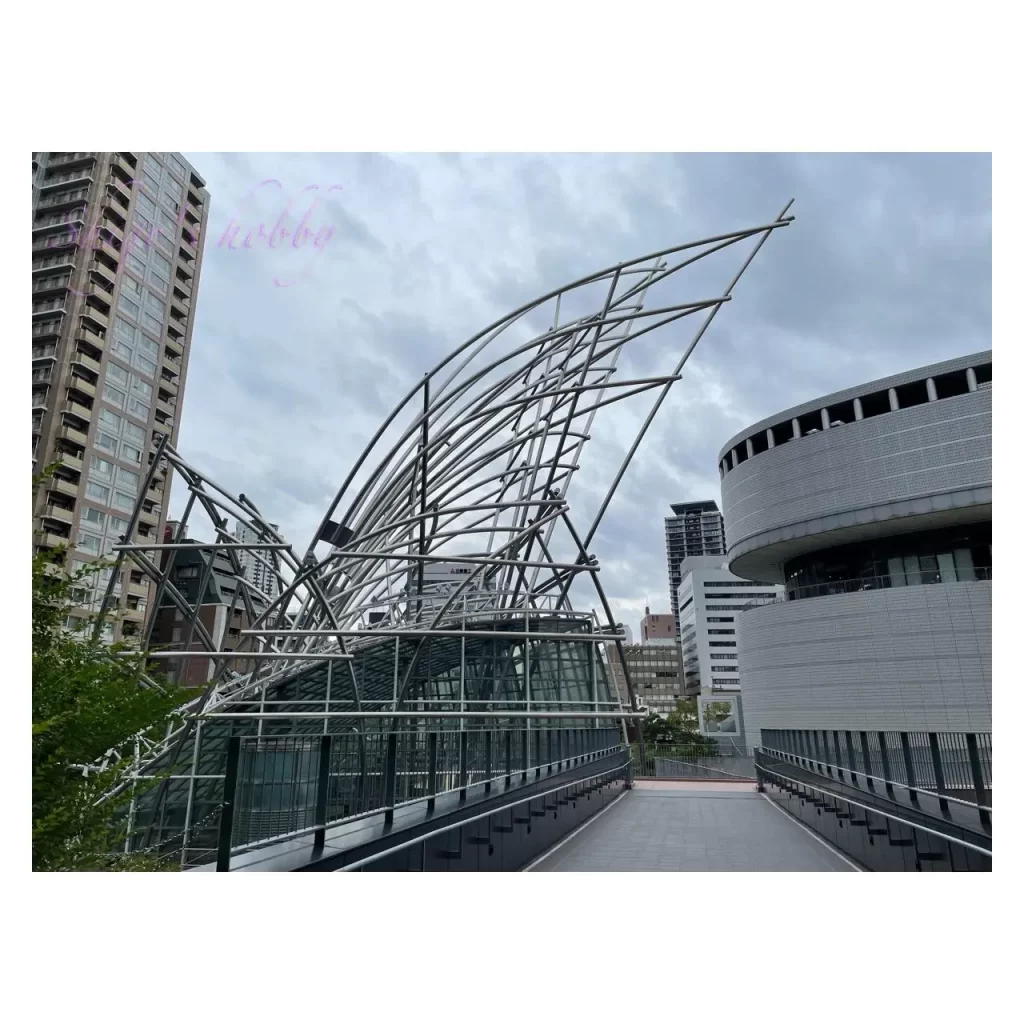
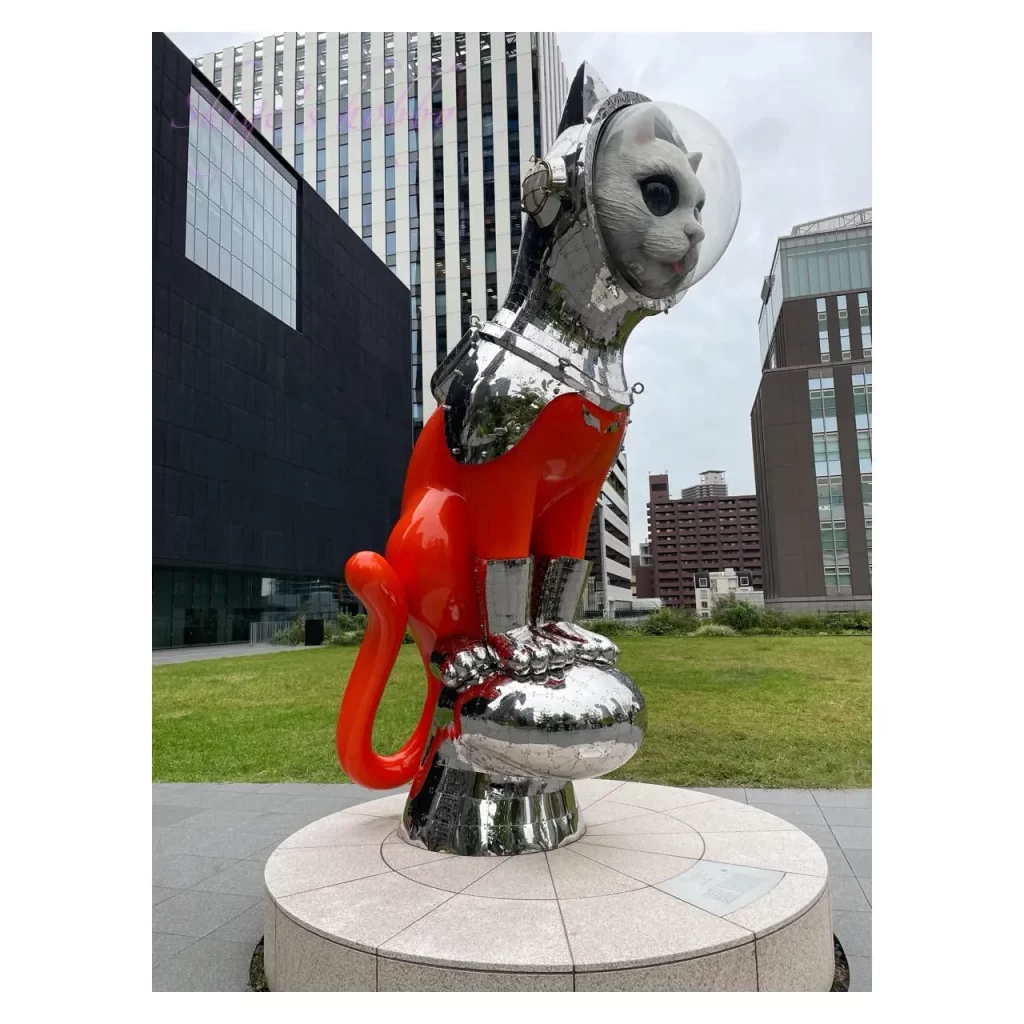
Gallery
[Best_Wordpress_Gallery id=u00221116u0022 gal_title=u0022Art-2024-1022-shiotau0022]Photo equipment
- HASSELBLAD X2D +XCD 28mmP
- CANON IXY3
- iPhone 12 mini
- RICOH GR21 +FUJIFILM X-tra400
Reference links
Update history
- 2024.11.6
Affiliate links
- Please see the disclaimer regarding advertising here.
- Italicized links in the text are advertisement links that take you to other sites.

![[商品価格に関しましては、リンクが作成された時点と現時点で情報が変更されている場合がございます。] [商品価格に関しましては、リンクが作成された時点と現時点で情報が変更されている場合がございます。]](https://hbb.afl.rakuten.co.jp/hgb/097bf1c4.db4c24c1.097bf1c5.1612004a/?me_id=1213310&item_id=21419023&pc=https%3A%2F%2Fthumbnail.image.rakuten.co.jp%2F%400_mall%2Fbook%2Fcabinet%2F7856%2F9784434347856_1_2.jpg%3F_ex%3D128x128&s=128x128&t=picttext)
![[商品価格に関しましては、リンクが作成された時点と現時点で情報が変更されている場合がございます。] [商品価格に関しましては、リンクが作成された時点と現時点で情報が変更されている場合がございます。]](https://hbb.afl.rakuten.co.jp/hgb/097bf1c4.db4c24c1.097bf1c5.1612004a/?me_id=1213310&item_id=20639537&pc=https%3A%2F%2Fthumbnail.image.rakuten.co.jp%2F%400_mall%2Fbook%2Fcabinet%2F5421%2F9784568105421_1_2.jpg%3F_ex%3D128x128&s=128x128&t=picttext)
Leave a Reply